Step 2: Remove the Intel processor from its box and plastic
clam shell packaging. To take off the protective black plastic chip carrier cover, hold the
processor by its corners and release one of the plastic tabs. Be
careful not to touch the gold pads on the underside.
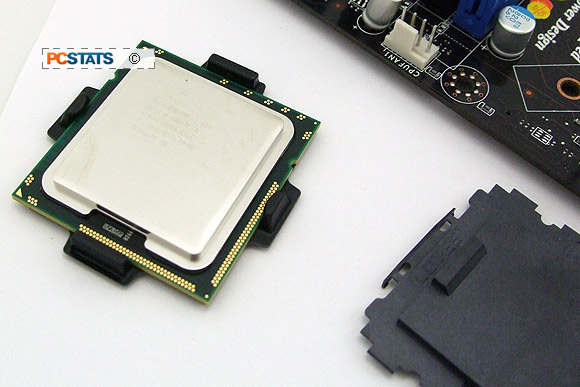
Now look at the bottom of the processor. Check for any damage
or foreign material on the contacts. Also note the two alignment notches
on either side of the processor (highlighted below by white arrows).
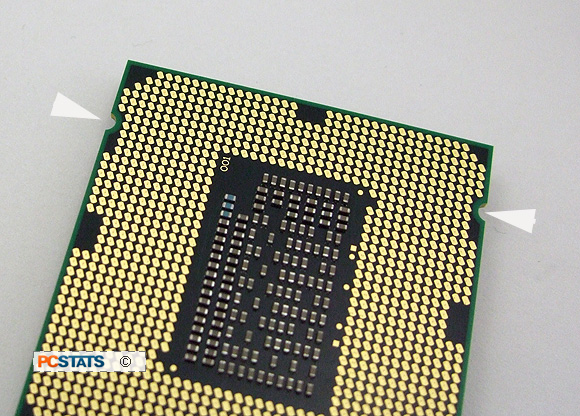
The notches are keyed to a pair of plastic tabs in the LGA1156 socket, ensuring that
the processor will only seat properly in one direction.
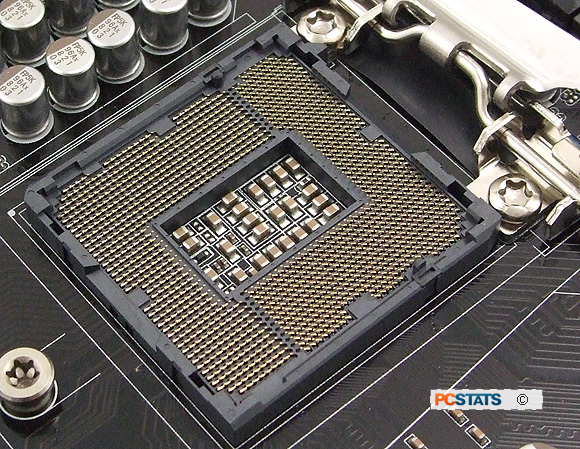
Hold the processor by the sides without notches. Orient
the chip so the notches are lined up with the socket tabs and lower the
processor
straight down into the socket gently, ensuring that it sits evenly. Note the two spaces in the grey plastic
socket frame in the image below, this is where your fingers should
grip the Intel processor as there isn't adequate clearance on the other
sides.
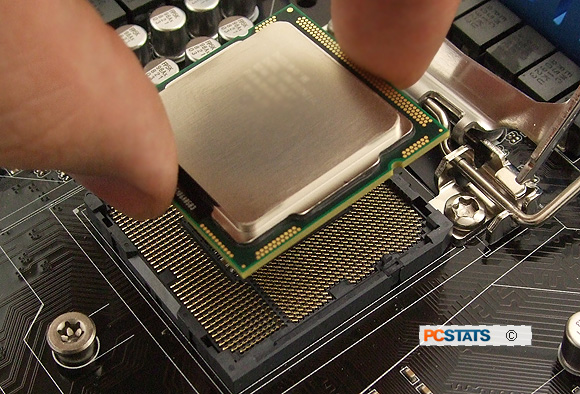
Processor alignment notches are highlighted by the white arrows.
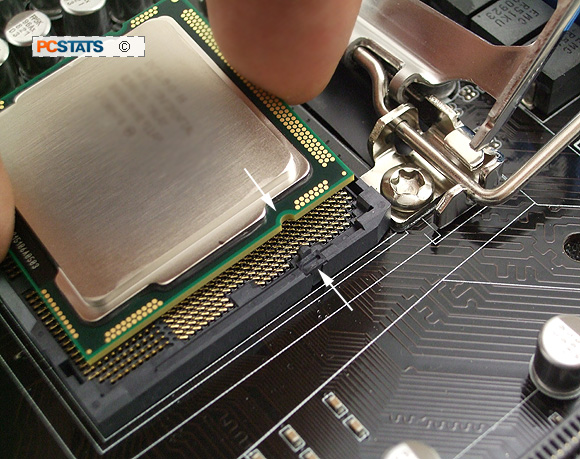
It's advisable not to drop the CPU as that may damage the fragile contact
pins.
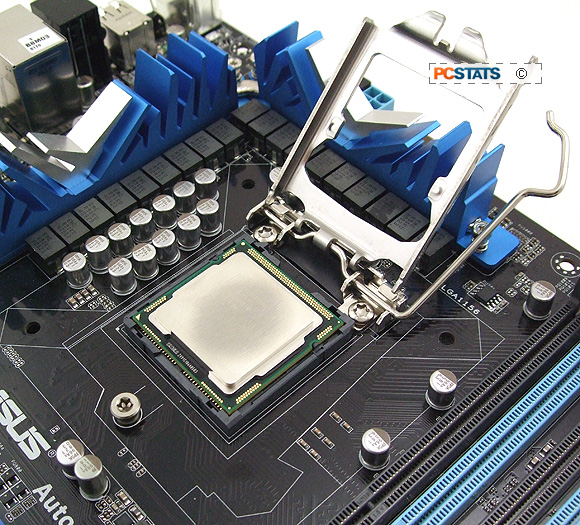
The Intel processor should sit flat in the LGA1156 socket, with the little gold triangle in the
corner opposite the cam lever arm.
If the CPU is not flush in the
socket, or the tabs are not aligned, remove the CPU and double check the
orientation is correct. No force is required to install the CPU in the socket - if you have to force
the chip, something is incorrect.
Next
- Locking the CPU in place.

